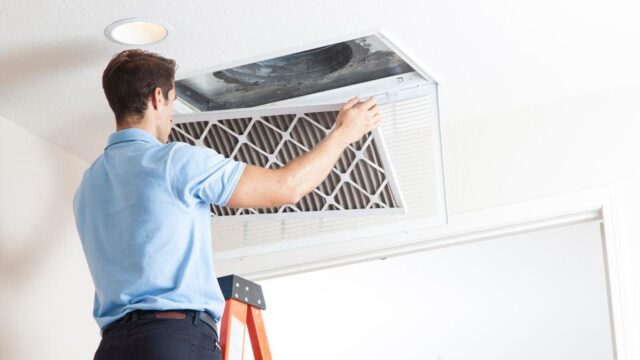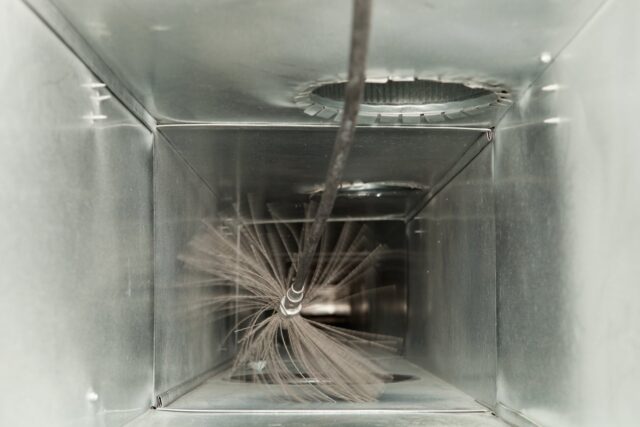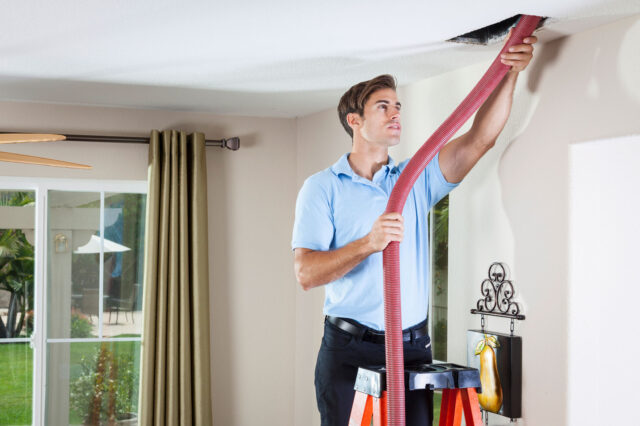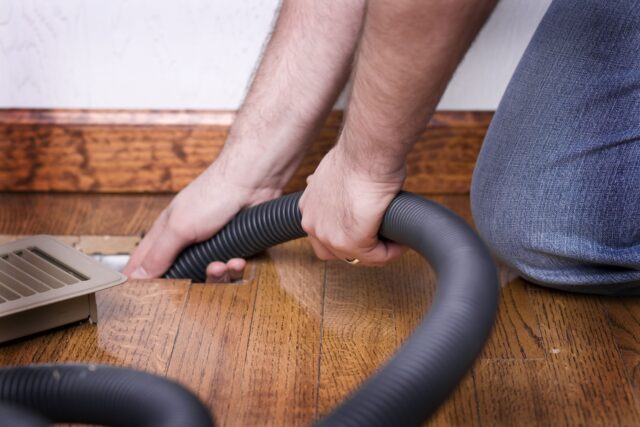
Duct cleaning refers to the process of cleaning the various components of a heating, ventilation, and air conditioning (HVAC) system. This includes cleaning air ducts, registers, grilles, and other components that facilitate air circulation throughout a building.
The primary purpose of duct cleaning is to remove accumulated dust, debris, mold, allergens, and other contaminants from the HVAC system.
Over time, these contaminants can build up in the ductwork, reducing indoor air quality and potentially affecting the performance and efficiency of the HVAC system. Cleaning the ducts can improve indoor air quality and ensure proper airflow throughout the building.
How Duct Cleaning Works

Duct cleaning typically involves a professional service provider using specialized equipment to access and clean the ductwork. This may include vacuuming the ducts, using brushes or agitators to dislodge debris, and applying cleaning agents to sanitize the system. The service provider may also clean other HVAC components, such as coils and drip pans.
What are the Benefits of Duct Cleaning?

Duct cleaning can provide several potential benefits, including:
Improved Indoor Air Quality:
Over time, dust, pollen, pet dander, mold spores, and other contaminants can accumulate in the ductwork. When the HVAC system operates, these contaminants can be circulated throughout the building, potentially leading to poor indoor air quality. Duct cleaning helps remove these contaminants, reducing the presence of allergens and improving the overall air quality indoors.
Allergen Reduction:
For individuals with allergies or respiratory conditions, duct cleaning can help reduce allergens in the air. Removing dust, pollen, and other allergens from the ductwork can contribute to a healthier and more comfortable living environment.
Energy Efficiency:
When ducts become clogged with dust and debris, it can restrict airflow and force the HVAC system to work harder to distribute conditioned air throughout the building. By cleaning the ducts, you can improve the airflow and enhance the efficiency of the HVAC system. This, in turn, can potentially lead to energy savings and lower utility bills.
Odor Removal:
Lingering smells and odors can accumulate in the ductwork over time. This can be due to factors such as pet odors, cooking smells, or smoke. Cleaning the ducts can help remove these odors, contributing to fresher and cleaner indoor air.
System Longevity:

Regular duct cleaning can help maintain the overall health and longevity of the HVAC system. Reducing the strain on the system caused by clogged or dirty ducts can help prevent premature wear and tear, potentially extending the lifespan of the equipment.
Basically, it’s important to note that the extent of these benefits can vary depending on various factors, including the initial condition of the ductwork and the specific circumstances of the building.
Consulting with HVAC professionals can provide a better understanding of the potential benefits of duct cleaning for your particular situation.
Key Takeaway
It’s worth noting that the need for duct cleaning can vary depending on factors such as the age of the building, the presence of pets or smokers, and the overall cleanliness of the environment.
While duct cleaning can be beneficial in certain situations, it is not always necessary or recommended. It’s advisable to consult with HVAC professionals to determine if duct cleaning is appropriate for your specific situation.













